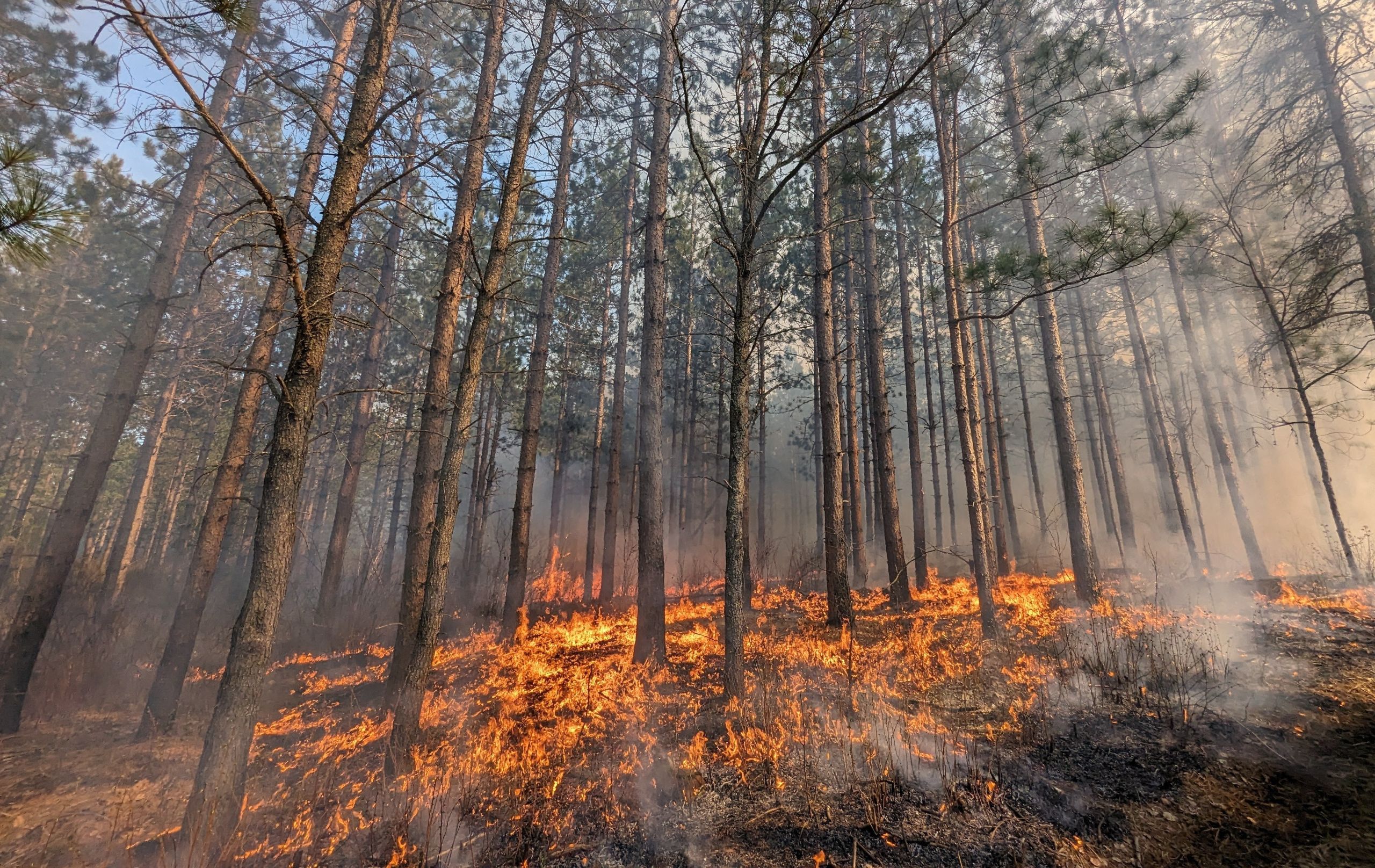
Fire-loving forest ecosystem communities rely on fire as both a community member and disturbance process that supports their collective health, well-being, and vitality. For example, wild blueberry bushes yield more berries following a fire and certain pine trees regenerate their offspring best when they distribute their seeds onto freshly burned soil. However, the predominant forest management methods of the past few centuries viewed fire as a destructive force and attempted to keep it from the landscape completely. This led to a reactive relationship with fire rather than a proactive one – both of which are needed across today’s modern landscape. The Cloquet Forestry Center (CFC) forest stewardship team is working with local partners to restore a proactive relationship with fire and fire-loving communities.
“So far in 2024, we’ve conducted two successful prescribed burns, one in the spring at the Otter Creek unit and one in the fall at the Camp 8 unit. This work builds upon the first-entry burns we conducted in May 2022,” said Kyle Gill, CFC Director of Operations and Forest Stewardship. “To reintroduce fire as an ecological and cultural process at the CFC, collaboration with several agencies is crucial to blend Western and Indigenous ways of knowing and stewarding Land. In particular, our partnership with the Fond du Lac (FDL) is pivotal in restoring fire to the CFC lands that reside on land reserved by FDL in the 1854 treaty. We’re lucky to be learning from and collaborating with Indigenous knowledge keepers and tribal fire practitioners.”
This connection with the FDL is especially critical due to the pre-colonial history of fire-maintained forest ecosystems on the lands where the CFC resides today. Ancestors of the FDL regularly burned to maintain landscape conditions that sustained Ojibwe livelihoods. The Camp 8 unit that was burned this year has a well-documented history of fire management.
Today, CFC staff collaborate with these partners to blend modern and historical fire management methods into their Land stewardship. When there are appropriate weather and fuel conditions, these prescribed fires use a combination of careful planning and burn unit preparation to ensure a safe and successful burn. Prescribed burns improve ecological community health by promoting the vitality of fire-loving plants, making overstory pine more resilient to future fires, and reducing the risk of catastrophic wildfires – all factors that are beneficial to both human and non-human members of the community.
CFC’s approach includes community members, academic researchers and students, state agencies, and industry partners. This work provides new and exciting opportunities for research, education, and collaboration.
Thank you to Fond du Lac Forestry & Fire Program, The Nature Conservancy, Bureau of Indian Affairs, Forest Stewards Guild, and University of Minnesota Silva Lab.

